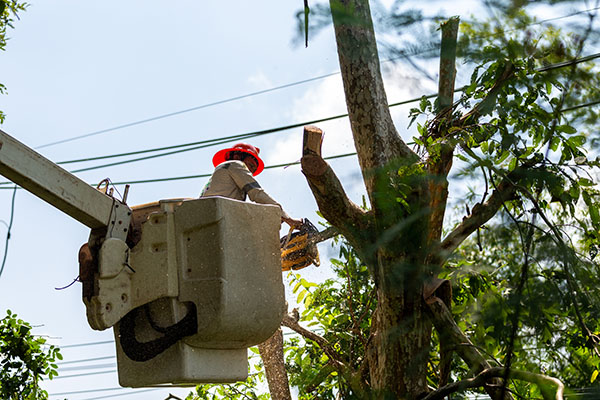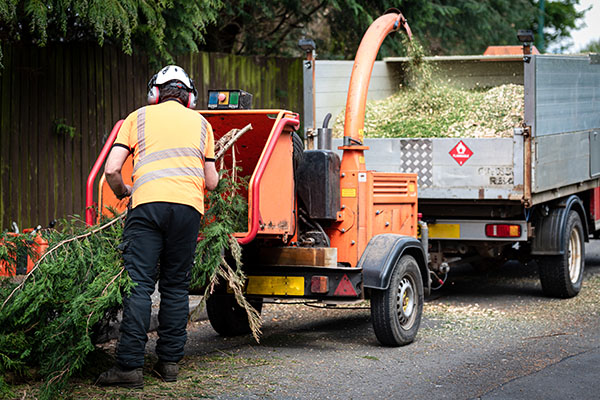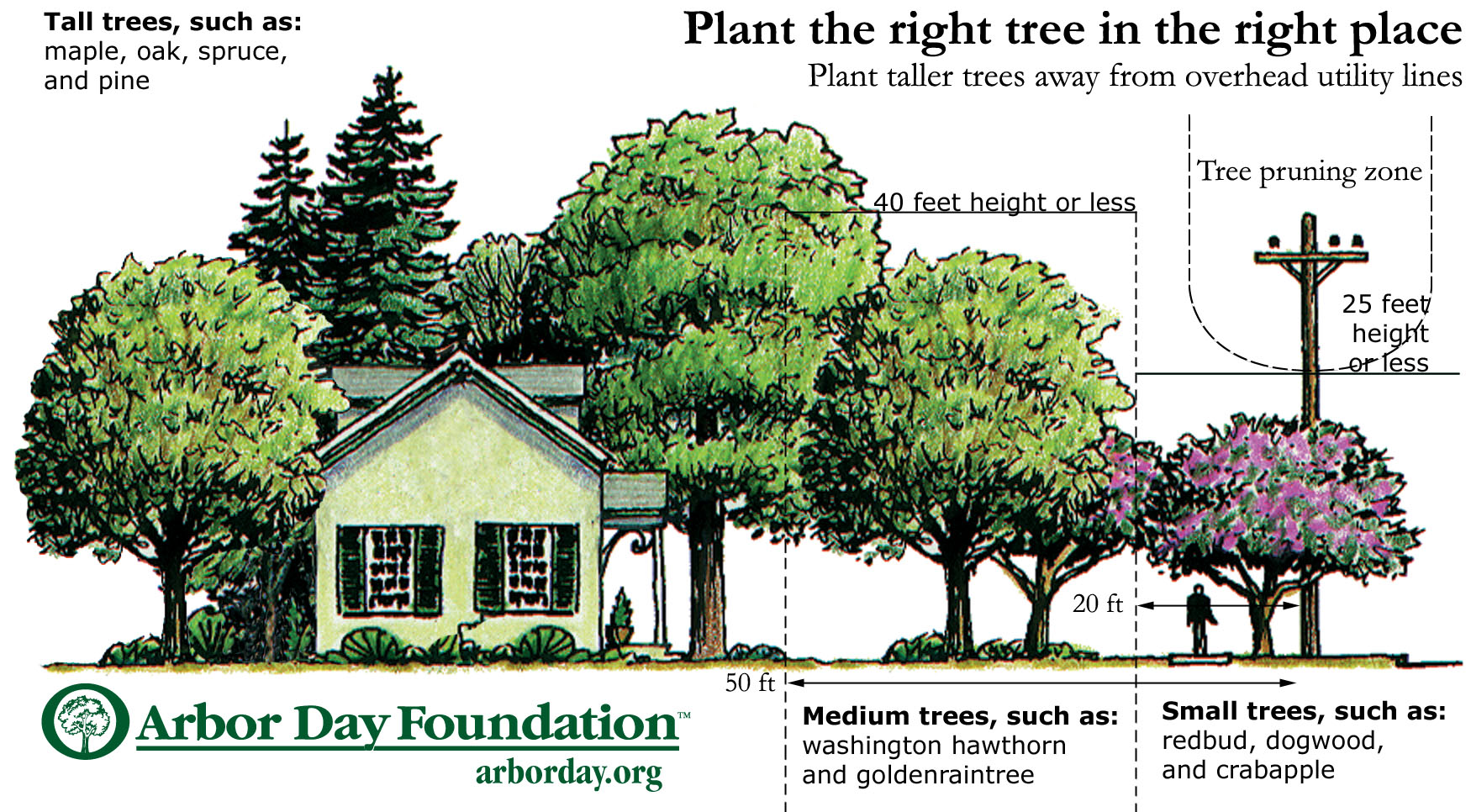Utility Line Clearing and Tree Trimming

Planting trees and bushes can save energy by shading homes in summer or blocking harsh winter winds. Trees and other plants in the utility right-of-way can slow crews working to resolve a power outage. And tree branches conduct electricity when touching power lines.
Ohio law requires utilities to maintain the safety of their lines. This can include cutting back (trimming) branches and limbs or even entire trees in a right-of-way that have the potential to damage lines and interrupt service—even on a customer’s property. Each electric company develops and submits a vegetation management plan to the Public Utilities Commission of Ohio (PUCO) describing how it intends to clear and maintain its right-of-way.
The Office of the Ohio Consumers’ Counsel provides answers in this fact sheet to frequently asked questions about the line clearing and tree trimming practices of Ohio’s electric utilities.
Can a utility representative enter private property?
Yes, utility representatives (or their contractors) may inspect or trim any vegetation to maintain the reliability of the power system and prevent outages. This includes entering private property. Utilities have this right through a legal “easement,” which is permission to have and maintain its lines on the customer’s property. Easements transfer with the property deed.
Who does the tree trimming and line clearing?
Ohio electric companies may have on staff crews or contract with professional firms.
Are there guidelines for how much trimming will be done?
Depending on the line voltage and type of tree, the work usually involves removing branches to allow several feet of clearance around a power line for 3-5 years. For service lines from the poles to buildings, usually only branches that are growing on or through insulated, lower voltage wires are removed.
How to know if work is planned for a property?
Advanced notice is not required. However, utilities often notify customers prior to scheduled activity. Notices are typically mailed or hung on the door and include a phone number to call with questions. Notice can be several weeks ahead or sometimes only days. Advanced notice is extremely rare for emergency situations, such as to restore service after a storm.
Trees are considered a homeowner’s property so consumers may have to make arrangements for debris removal at their own expense.
Are there preparations for tree trimming?
Most electric companies have representatives to answer questions, so customers should call or schedule an appointment as soon as they are notified of the work. It is too late to wait until the crew is in the yard. Ask for a written description of what to expect. Customers may also want to take pictures of trees near wires before the work starts.
Are there ways to avoid the utility trimming trees?
Property owners can trim their own trees and bushes each year to keep them from growing into power lines. This should be done carefully to avoid personal injury or damage to the utility lines. Check with the utility for their requirements for the distance between power lines and branches. Some utilities will remove trees upon request that require repeated trimming to clear lines. Ask the electric company when notified about routine line clearing work.
Always plant the right trees and away from utility lines. Consult with an ISA Certified Arborist to find trees that suit the soil type, space, and other property constraints. To locate an arborist, visit www.treesaregood.org. Learn more about planting trees near utility lines on OCC’s website.
Safety is important!
- Never approach a fallen tree that may be in contact with an electric line. Immediately contact the utility company.
- Do not climb trees growing near electric lines.
- Always contact the Ohio Utilities Protection Service (OUPS) at 8-1-1 or 1-800-362-2764 at least 48 hours before any digging project to locate all underground utilities. This law is in place to help prevent outages and injury when digging holes for planting or any project on a property. Learn more at https://oups.org.
Contact the utility with questions and concerns:
What to know about tree planting
Before selecting a tree, evaluate the site where it is to be planted. Is there an electric line nearby? If so, it’s important that trees will not interfere or require maintenance for the wires.
Consider what that tree might look like in 10 or even 20 years. Certain types of trees should never be planted under or near overhead, primary electric lines. Species like oak, many maples, spruce, and pine should be planted at 40-50 feet from primary electric lines (see diagram from the Arbor Day Foundation.) Medium-sized species may be planted 30-40 feet from the lines. Small trees and shrubs that grow to only 20-25 feet tall are just fine under electric lines if kept at least 15 feet from the poles.

As for the wires on large poles and towers called transmission lines, no trees that can grow into or fall onto these high voltage wires should be planted within the safety or fall zone of the right-of-way. Sometimes this can be 80-150 feet on each side of the lines. As a result, electric utilities often have the right to remove any woody vegetation that will interfere with the wires now or in the future.
Service crews must always have access to the lines, so if there is a lane or vegetation-free zone in a transmission right-of-way, avoid planting anything that may keep a vehicle or person from entering for inspection, safety, and maintenance.
What about the service line from the pole to the home and/or buildings? Small trees and shrubs are okay planted under them. Provide 5 feet or so on each side of the service line to plant medium and large trees. Homeowners may want to call the utility for advice on selecting trees that are appropriate for under and near electric lines.
Buried utilities including electric, gas, sewer taps, and water taps are also a concern. Tree roots hold trees up, so if an underground utility line needs repaired or replaced, cutting roots for the repair may put the tree at risk of tree falling over. Avoid planting small-growing trees within 10 feet of an underground utility and larger growing trees within 20 feet. Trees and other vegetation should not be planted within 10 feet of any utility service equipment, including access boxes for buried power lines.
Tree selection and care resources
- ISA’s Consumer tree care site: https://www.treesaregood.org/
- Tree Selection for the “Un-natural” Environment – includes a utility-friendly tree list: https://www.extension.purdue.edu/extmedia/FNR/FNR-531-W.pdf
- Ohio Urban Forestry Toolbox: https://tinyurl.com/ohiouftoolbox
- Ohio’s Endorsed Tree Planting Specifications: https://tinyurl.com/ohtreeplantright
- Common Trees of Ohio: https://tinyurl.com/ohforestrytrees
- US Forest Service How to Prune Trees: https://tinyurl.com/usfsprune
To download: Click the folder with a down arrow icon. To print: Click the printer icon in the top right of the display.
If you need multiple copies for an organization or group, please contact a member of our outreach team.
